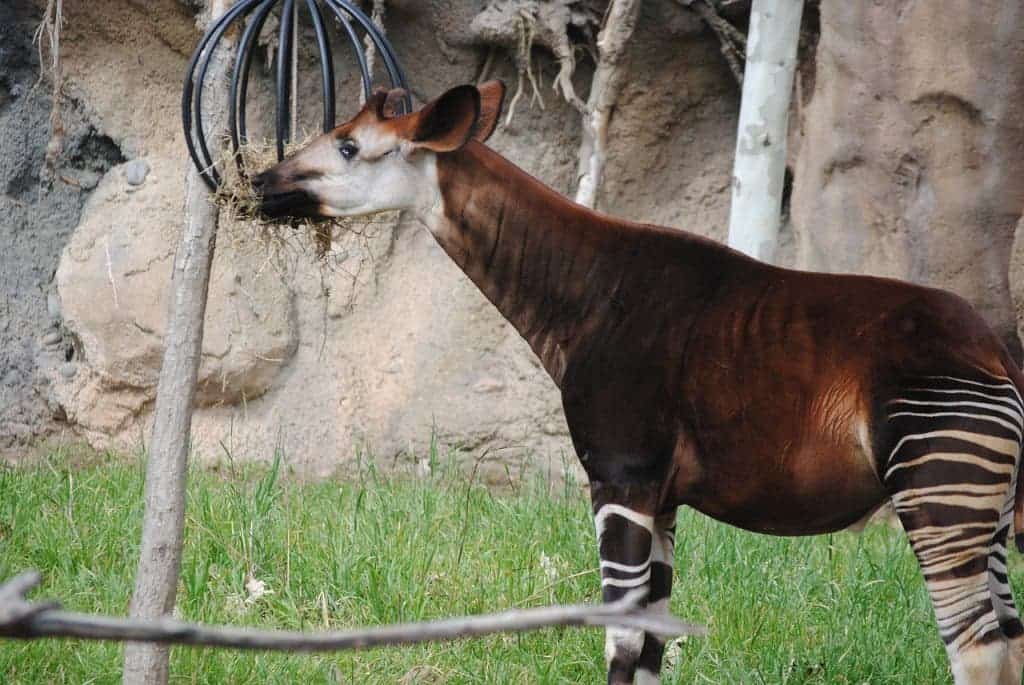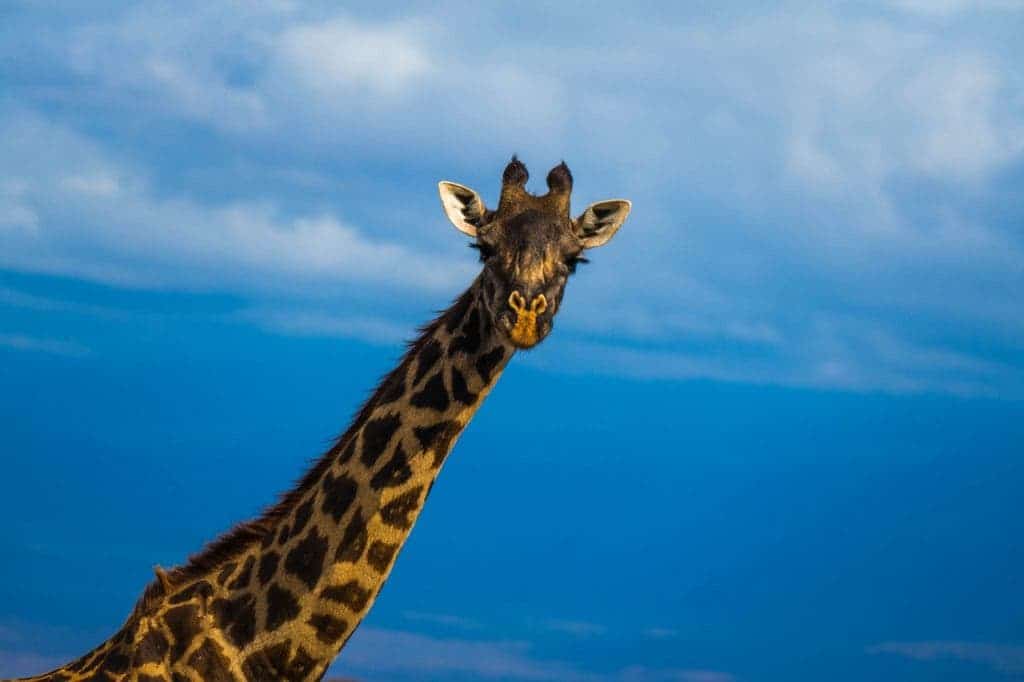Researchers have sequenced the genomes of the tallest mammal on Earth, as well as it’s unlikely closest cousin, the okapi. By comparing the genomes of the two species, we now have a firmer grasp of the evolutionary timeline in which the split from a common ancestor took place. The team also zeroed in on those gene mutations that instruct the giraffe’s cells to grow a tall neck, as well as other adaptations.
A big heart for a long neck
“The giraffe’s stature, dominated by its long neck and legs and an overall height that can reach 19 feet (~ 6 m), is an extraordinary feat of evolution that has inspired awe and wonder for at least 8,000 years—as far back as the famous rock carvings at Dabous in the Republic of Niger,” said Douglas Cavener of Penn State University, who led the research team with Morris Agaba of the Nelson Mandela African Institute for Science and Technology in Tanzania.
“The evolutionary changes required to build the giraffe’s imposing structure and to equip it with the necessary modifications for its high-speed sprinting and powerful cardiovascular functions have remained a source of scientific mystery since the 1800s, when Charles Darwin first puzzled over the giraffe’s evolutionary origins,” said Cavener, a professor of biology and the Verne M. Willaman Dean of the Eberly College of Science at Penn State.
Indeed, giraffes can be considered evolutionary jewels seeing how difficult it must have been to balance a long neck adaptation with the disadvantages it brings. A long neck means the giraffe is taller and can reach food other animals can’t. It also makes them vulnerable, but the giraffe has come up with some very clever tricks.
Despite it towers at six meters, the giraffe can reach sprints of up to 60 kilometres per hour thanks to its sloped back, long legs and short trunks.
Then there’s the cardiovascular adaptation. To support its two-meter neck, the giraffe’s heart has evolved to have an unusually large left ventricle that can maintain a blood pressure two and half times higher than humans’.
Cavener and colleagues sequenced for the first time the genomes of the giraffe and the okapi, then compared them to those belonging to forty different animals like the pig, cow, camel, human and so on.
One of the most important results has to do with the timeline of the giraffe and okapi divergence. Previously, evolutionary models suggested the two species split from a common ancestor 16 million years ago. The present findings suggest this happened much sooner.
“Okapi’s gene sequences are very similar to the giraffe’s because the okapi and giraffe diverged from a common ancestor only 11-to-12 million years ago – relatively recently on an evolution timescale,” Cavener said. “In spite of this close evolutionary relationship, the okapi looks more like a zebra and it lacks the giraffe’s imposing height and impressive cardiovascular capabilities. For these two reasons, Okapi’s genome sequence provides a powerful screen that we have used to identify some of the giraffe’s unique genetic changes.”
Roughly 70 genes that showed multiple signs of adaptations were identified. These include genes that are known to regulate the development and physiology of the skeletal, cardiovascular, and nervous system. It’s no coincidence that, previously, researchers predicted exactly this sort of genes should be found to support the giraffe’s tall neck.

The okapi is the giraffe’s closest relative. The animal, however, looks more like a zebra. Credit: Pixabay
The researchers also pinpointed those genes that allow the giraffe to sport exactly the same number of bones as the neck and legs of humans. To grow such a tall neck using the same number of bones, the giraffe’s cervical vertebrae and leg bones evolved to become vastly extended. This development is coded with two genes — one that specifies which part of the skeleton needs to grow more, and another that actually stimulates the growth, as reported in Nature Communications.
It’s amazing how much we can learn simply sequencing genomes. The present research might also serve as a much needed wakeup call. Like most wild animals in Africa, giraffe numbers have plummeted due to poaching and habitat loss.
“We hope that the publication of the giraffe genome and clues to its unique biology will draw attention to this species in light of the recent precipitous decline in giraffe populations,” Cavener said. “While the plight of the elephant—giraffe’s shorter companion in the African savannah—has received the lions share of attention, giraffe populations have declined by 40 percent over the past 15 years due to poaching and habitat loss. At this rate of decline, the number of giraffes in the wild will fall below 10,000 by the end of this century. Some giraffe subspecies already are teetering on the edge of extinction.”










